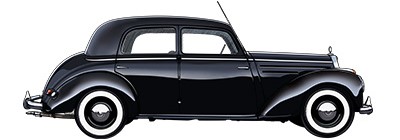Emil Jellinek and his significance in the history of Mercedes-Benz
Emil Jellinek was an Austro-Hungarian businessman who maintained good relations with the international financial world and aristocracy. He was a potential customer of Daimler-Motoren-Werke and at the time propagated the vehicles of the German carmaker from Cannstatt. Increasingly, he also acted as an automobile dealer and distributed Daimler vehicles in the highest circles of society. You can find out how the Mercedes brand came about and what significance Emil Jellinek played in the history of Mercedes-Benz here
Jellinek's career and his contacts in international high society
Emil Jelinek was born in Leipzig on April 6, 1856, the son of the Viennese scholar Adolf Jellinek. He was not a diligent student, learning at school was not particularly to his liking. He changed schools several times, joined a railroad company at 17, and emigrated to France at 19. Through his father's connections, he began his career in the diplomatic service in Morocco. Later he became vice-consul in Algeria, where he founded a tobacco business with his father-in-law and soon became very wealthy. Along the way, he took a position with a French insurance company, was very successful on the stock market, and moved with his family to the vicinity of Vienna. The family now often spent their winters on the Riviera, where he made contacts with high society and the international business world. It was there that Jellinek's passion for automobiles began.
The pseudonym Monsieur Mercedes
Emil Jellinek became one of the most important and influential customers of Daimler-Motoren-Gesellschaft. He distributed the German automaker's vehicles in the highest circles of society. The horseless cars were very popular among the rich and prominent people in Nice. Notables such as the Rothschild family bought Daimler cars from him. This gave him clout at DMG - on April 2, 1900, the company's owners elected Emil Jellinek to the supervisory board. At the same time, he actively pursued his passion for car racing, where he competed under the pseudonym "Monsieur Mercedes," the name of his daughter Mercedes.
When he placed a collective order for 36 Daimler cars, he demanded cars with a Mercedes emblem in radiators, built according to his requirements for racing. He also wanted to offer the cars under the name "Daimler-Mercedes" as the sole agent in Austria, Hungary, France, Belgium and the USA.
The beginning of the "Mercedes era"
In December 1900, Daimler delivered the first vehicle, a 35-hp racing car. Jellinek used the car the following spring at the Nice Race Weeks and drove to victory in superior fashion. This was the beginning of the "Mercedes era". This "First Mercedes," developed by Wilhelm Maybach, the chief designer at Daimler Motoren Gesellschaft, attracted international attention. Moving away from carriage design, with a low center of gravity and equipped with the latest technology, it was considered a groundbreaking innovation that revolutionized automotive history throughout the world and helped Jellinek and the Mercedes achieve extraordinary fame. From then on, the majority of Daimler vehicles bore a curved Mercedes lettering in the radiator.
The Mercedes name as a landmark
A year later after the Mercedes victory in Nice, Emil Jellinek gets permission to call himself "Jellinek-Mercedes". In June 1902, the name "Mercedes" is registered as a trademark and legally protected on September 26.
To this day, Mercedes-Benz is the only car brand to bear a female name. It was the name of a French girl, which has left a lasting mark on the success story of Mercedes.




